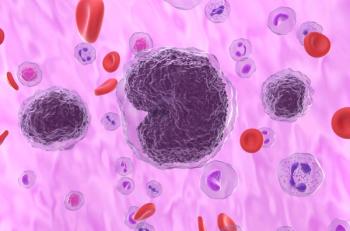
High Burden of AD, Bacterial Skin Infections Seen in Young Urban-Living Indigenous People
Urban-living Indigenous children and young people in high-income countries reported a higher likelihood of current and severe symptoms of atopic dermatitis (AD) compared with a non-Indigenous population, as well as a higher incidence of bacterial skin infections.
The severity of
Compared with their non-Indigenous peers, Indigenous individuals have exhibited higher global rates of health disparities. BSI particularly have a high burden in Indigenous CYP, noted the study authors, including impetigo, cellulitis, and abscesses. The prevalence of AD, which increases the risk of BSI, has also been rising among CYP, with higher prevalence generally observed in urban settings compared with rural populations.
“Both BSI and AD adversely impact general health, school performance, and overall quality of life in affected CYP and their families. Untreated BSI can lead to serious complications including sepsis, postinfectious glomerulonephritis, and rheumatic heart disease,” said the study authors. “Despite the rate of urbanization for Indigenous people increasing globally, research is lacking on the burden of AD and BSI for Indigenous CYP living in urban areas. Indigenous people in high-income countries share a history of colonization, displacement, and subsequent ongoing negative impacts on health.”
They conducted a systematic review of primary observational studies containing epidemiologic data on AD and BSI in urban-living Indigenous CYP (< 20 years) in high-income countries to assess the burden of these diseases among those living on traditional lands that are now urban environments, as well as those who have moved from their traditional lands to urban settings.
Eligible studies were in English and published in the MEDLINE, EMBASE, EMCARE, Web of Science, and PubMed databases between January 1990 and December 2021. From 2278 original manuscripts assessed, 16 were included on studies in AD (n = 7 manuscripts of 8 studies) and BSI (n = 9 manuscripts of 9 studies).
AD and BSI disease frequency (proportion, prevalence, incidence) was the primary outcome examined, with secondary outcomes examined where available, including clinical features, risk factors, comorbidities, complications, and culture-proved etiology.
Findings indicated, with the exception of 1 study of small sample size, 1-year AD prevalence and current severe AD prevalence were greater in Indigenous CYP (median prevalence, 17.05% and 3.35%, respectively) vs non-Indigenous (13.2% and 0.85%, respectively), with children (6-7 years) showing a higher 1-year AD prevalence than adolescents (13-14 years).
Urban-living Indigenous CYP in high-income countries also had a higher incidence of all measures of BSI compared with their non-Indigenous peers and were overrepresented for all measures of BSI compared with their proportion of the background population.
The heterogeneity in the global definition of “urban” was noted to cause challenges for the study authors in screening for suitable manuscripts. The incomplete representation of all Indigenous populations in high-income countries, specifically the lack of studies from the United States, Norway, Sweden, Finland, or Denmark, was also cited as a limitation to the study findings.
“We echo the call to action for more studies to better understand the impact of AD and BSI in urban-living Indigenous CYP, noting specifically the poor representation of North American Indigenous CYP in the published literature,” concluded the researchers. “Codesigned research with Indigenous communities will help identify sustainable community-wide strategies for the prevention and treatment of AD and BSI in urban-living Indigenous youth.”
Reference
Ricciardo BM, Kessaris HL, Kumarasinghe P, Carapetis JR, Bowen AC. The burden of atopic dermatitis and bacterial skin infections among urban-living Indigenous children and young people in high-income countries: a systematic review. Pediatr Dermatol. November 9, 2022. doi:10.1111/pde.15153
Newsletter
Stay ahead of policy, cost, and value—subscribe to AJMC for expert insights at the intersection of clinical care and health economics.













































